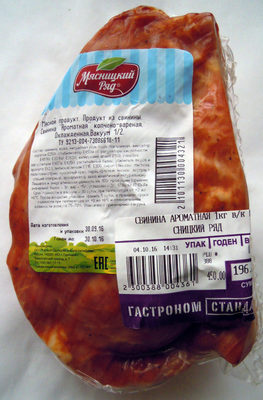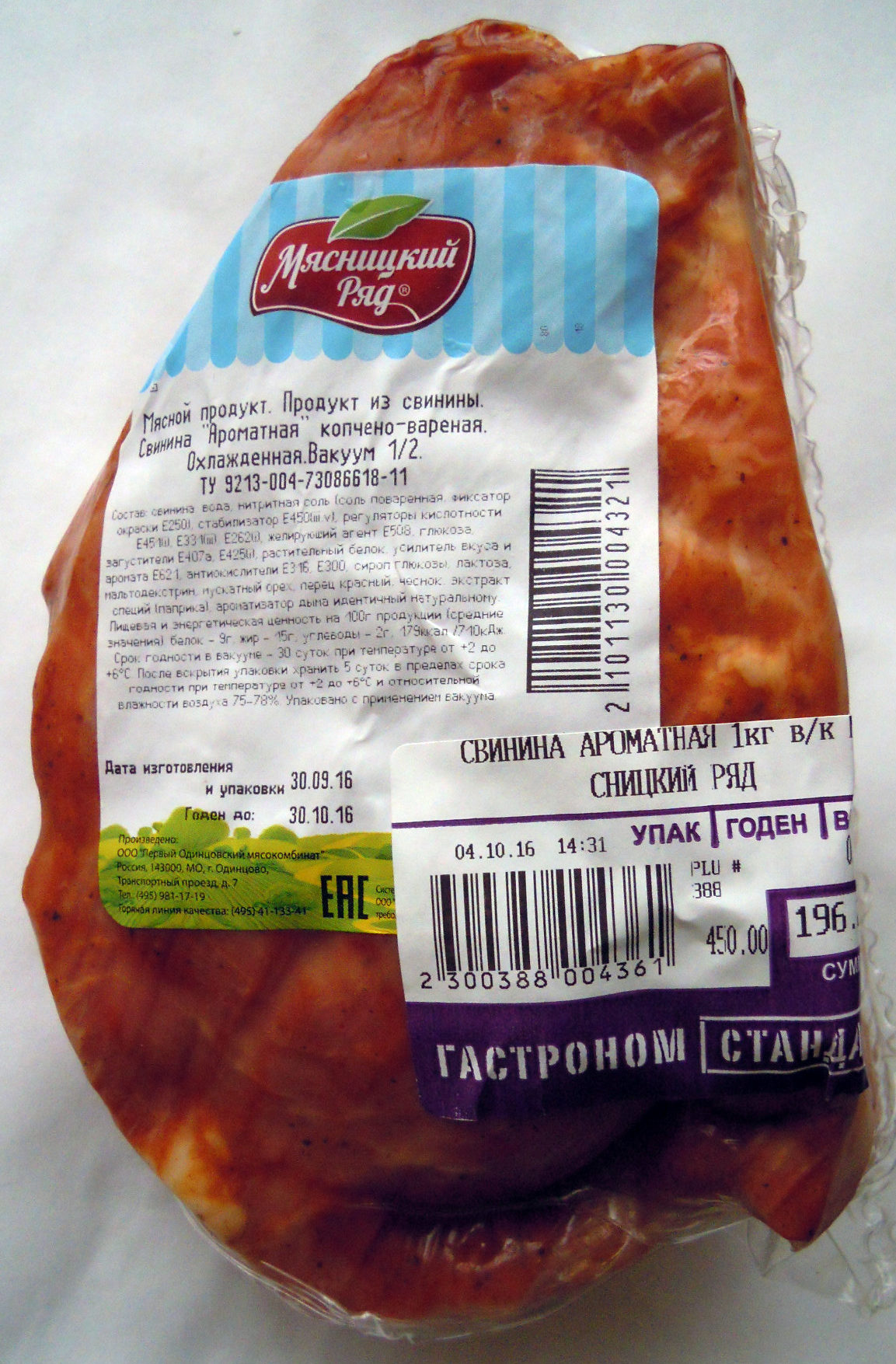Свинина «Ароматная» копчено-вареная - Мясницкий Ряд - 450 г
This product page is not complete. You can help to complete it by editing it and adding more data from the photos we have, or by taking more photos using the app for Android or iPhone/iPad. Thank you!
×
Barcode: 2101130004321 (EAN / EAN-13)
Common name: Мясной продукт. Продукт из свинины. Свинина "Ароматная" копчено-вареная. Охлажденная. Вакуум 1/2.
Quantity: 450 г
Packaging: Plastic, Frozen, ru:Бумажная наклейка, ru:Прозрачный пакет
Brands: Мясницкий Ряд
Categories: Meats and their products, Meals, Meats, Meals with meat, Pork meals, ru:Мясной продукт. Продукт из свинины. Свинина "Ароматная" копчено-вареная. Охлажденная. Вакуум 1/2.
Labels, certifications, awards: EAC, ru:ТУ 9213-004-73086618-11, ru:Упаковано с применением вакуума
Manufacturing or processing places: Транспортный проезд, г. Одинцово, МО, 143000, Россия
Stores: Стандарт
Countries where sold: Russia
Matching with your preferences
Environment
Packaging
Transportation
Report a problem
Data sources
Product added on by bleakpatch
Last edit of product page on by beniben.









